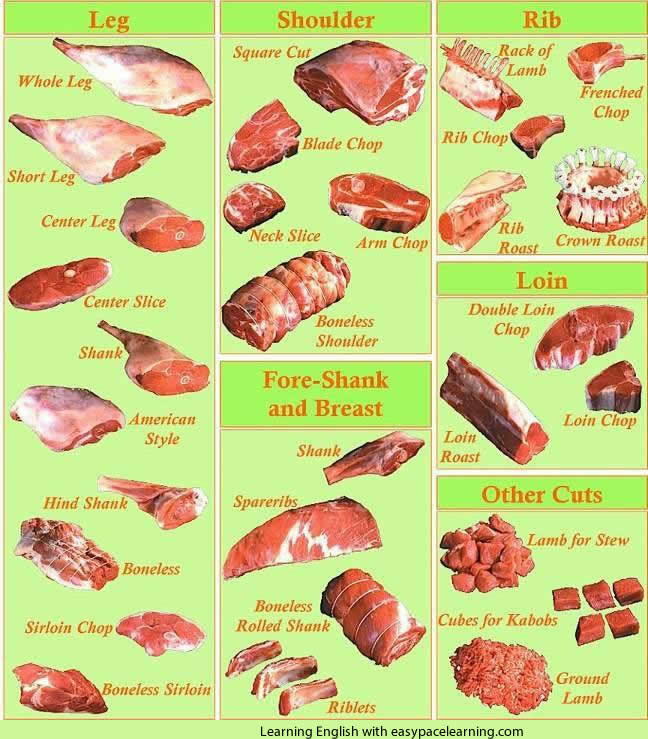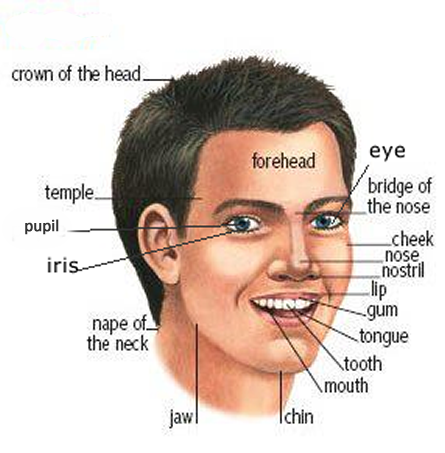Most common meats = lamb or mutton (mutton = sheep ), pork or beef
Most common poultry = chicken, turkey, goose, duck, pheasant
Most common game = rabbit, hare, partridge, pheasant
Most common seafood = fish, prawns, shrimps, lobster, scallops, mussels, crab
Most common vegetables broccoli, carrots, cabbage, cauliflower, beans, garlic, green onions, red onions
Most common fruit apples, orange, banana, watermelon, strawberries, plums,
Different parts of meat vocabulary
Ways food is cooked
boiled –
Mrs Jones boiled the rice.
The potatoes were cooked in boiled water.
steamed –
Mrs Smith steamed the fish over a pan of boiling water
fried / sauteed –
cooked in oil in a wok or a frying pan
Mr bean loves to eat fried egg in the morning.
Mr Jones fried the bacon for is sandwich
stir-fried –
fried fast using a wok in hot oil
pan-fried –
fried in a frying pan
Mr bean fried the steak in the frying pan.
steak can be pan-fried.













